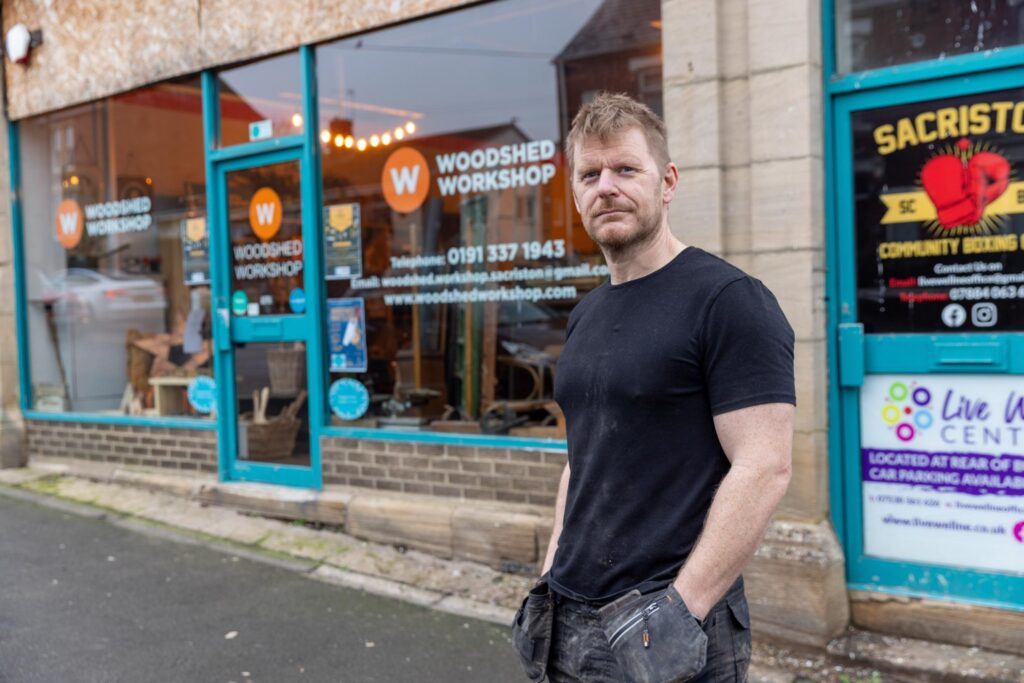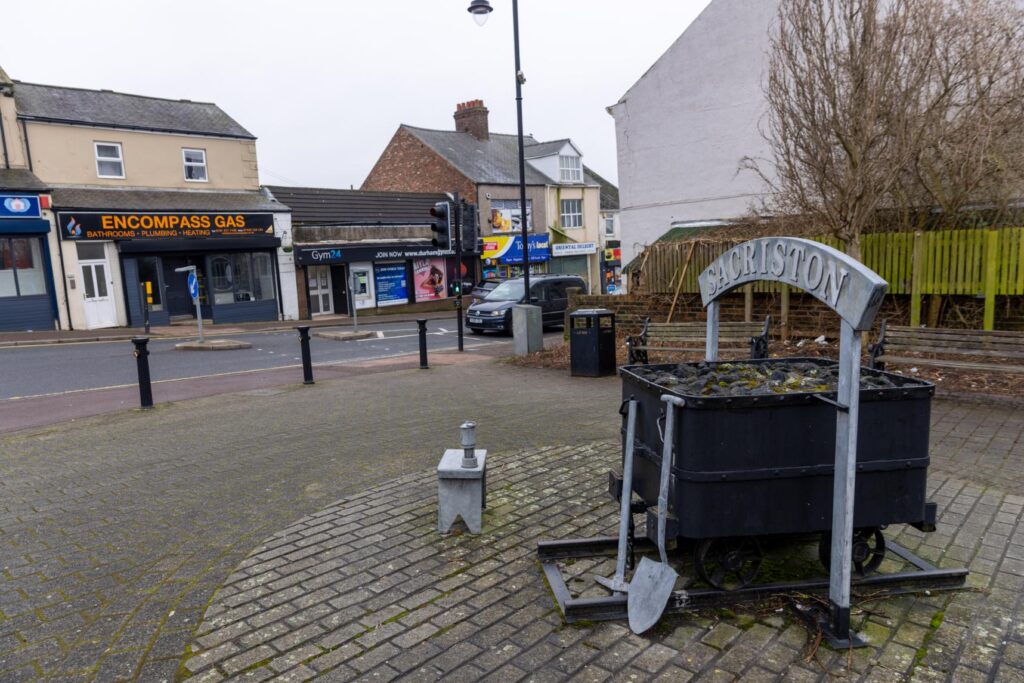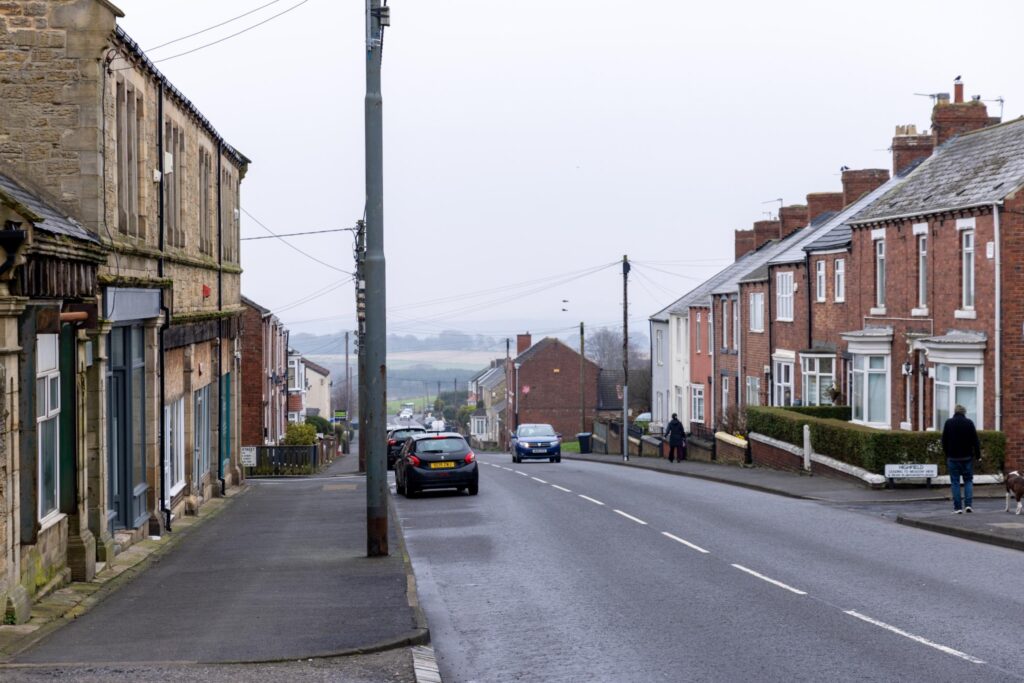
Nathan Hopkins and his energetic dog Penny are welcoming hosts — which is just as well. In February a leading academic invited a House of Lords committee to visit Nathan’s village as part of its investigation into failing high streets in towns and villages. If committee members head to Sacriston in County Durham they need to be prepared for some straight talking and inspiring energy.
At first glance there isn’t too much to cheer about in Sacriston. The main street is full of shuttered premises, the odd hairdresser’s, a couple of mini supermarkets and a plethora of takeaways.
“Not like it used to be,“ grumbled one senior local, muffled against a grey, drizzly day as he dragged a dog considerably less enthusiastic than Penny on its afternoon constitutional. “It’s gone to the dogs — a shame.”
But beneath the surface there’s a more hopeful story to tell.
Nathan is part of an initiative that has been brought to the attention of the ennobled.
We say, ‘You are not attending school, you hate teachers — come in here and we’ll teach you some skills’ and we get really strong buy-in on their part.
Nathan Hopkins
A team led by Professor John Tomaney has taken a forensic look at Sacriston — its past, present and future. In Nathan and his fellow social entrepreneurs, the academics have honed in on what they see as an overlooked ingredient in bringing life back to so-called left-behind communities.
Nathan and Penny can be found in the old Co-op near the heart of Sacriston. It’s a building that has witnessed the rise and fall of the mining village. In its heyday it housed a grocery shop, a butcher’s with a slaughterhouse, and on its upper floor a “Store Hall” to hold meetings and concerts. It was a vital part of the Sacriston community, a place where mining wages could be spent and neighbours could come together.
Like the different faith churches, retirement homes, sports clubs and even a school, the Co-op in its glory days was part of what Prof Tomaney describes as social infrastructure. Often paid for through villagers’ subscriptions or occasional philanthropy, these were places built over generations that left people with a lasting emotional connection to their village.
But the closure of Sacriston’s mine in 1985 was the sucker punch in a long series of social and political changes which floored the village. When the Co-op pulled out, the County Durham rain and damp moved in. For 15 years the building stood derelict.

Enter Nathan, a local man on the hunt for a new home for his charity that supports young people who fall out of school or, as he puts it more bluntly, are “thrown out”. By teaching woodworking skills, Nathan offers a future to local youngsters who see none.
Despite the crumbling plaster, leaking ceilings and little by way of creature comforts, the Co-op building caught his attention. After a protracted legal tussle with Durham County Council the Co-op was given over to Sacriston Enterprise Workshops on a 30-year lease with a peppercorn rent. Nathan rolled up his sleeves. With his young trainees, he transformed part of the village institution into the Woodshed Workshop. As he points out, for young people it’s a place that can change lives.
“We say, ‘You are not attending school, you hate teachers — come in here and we’ll teach you some skills’ and we get really strong buy-in on their part,” says Nathan. “We had one lad who, when school first got in touch, they said he was maliciously non-compliant. He couldn’t read or write. But he’s done great and works on a local estate now.”
- Read more: The story of a different Billy Elliott
- Read more: Baltic Open Submission – every exhibit tells a tale
Elsewhere in the Co-op building there’s the Sacriston Youth Project providing low-cost out-of-school care, an art group for people with vulnerabilities and soon a big announcement on a new training venture. It has become, once again, a social hub.
Spend even half an hour with Nathan and his passion and commitment are infectiously uplifting. For the academics, his ambition for the old Co-op put a human face on an overlooked element of reconnecting communities fractured by hard times.
According to Prof Tomaney, social infrastructure — places like the landmark old Co-op, community halls, churches, welfare rooms where people get together — are friends and neighbours, the emotional connections to a place that hard economics can sometimes forget.
He told the committee: “Sacriston had a really thriving high street within living memory and, although it was important, it was based not just on retail. There was a huge amount of … social infrastructure in the village: there were busy churches and chapels, working men’s clubs, pubs and a miner’s welfare hall. All brought people to the high street … and generated a sense of community cohesion which people in the village now feel is really lacking.”

Today’s Sacriston villagers have their ancestors to thank for the thriving place they created.
Irish mining settlers helped build a school and church in Sacriston, paid for through house-to-house collections, lotteries and tea parties. Methodists built their chapels and the Anglicans another school. According to the researchers the places that made up the social backbone of village life “were mainly the product of efforts of people in the village, funded largely from their own resources … supported on occasion by gifts from the Charlaw and Sacriston Company”, the first owners of the mine.
So while it might be tricky to measure what the Co-op and the other buildings delivered in pounds and pence, they give villagers a sense of belonging — and what the researchers described as a “moral community”.
The good people of Sacriston acted when the need was right in front of them. A local committee, part of the Durham Aged Mineworkers Homes Association, raised funds for retirement homes and £300 was collected to house Belgian refugees in the village. As a result, the community, whatever its setbacks or challenges, had a sense of shared interest.
So does the village history of self-help and self-reliance hold the answer for Sacriston today? In responding to the needs in front of him in a building once at the heart of village life, is Nathan walking in the steps of Sacriston’s founding fathers? Maybe.
Instead of being boarded up the Co-op is now home to young and old (Nathan told me a great tale of elderly men on a woodworking project sat round discussing their statin intake and health issues — shared experience and shared laughs). Its revival is a labour of love which has seen social entrepreneurs like Nathan tussle with grants, bureaucracy and the pace of officialdom.
But as Prof Tomaney told the Lords committee, if the building is to thrive, the activities inside it need reliable funds — which in 21st-century Britain seem harder to come by.

Even Nathan’s infectious optimism flags when he talks about the Herculean task of raising money to support his work with would-be carpenters or craftsmen. He rails against the form-filling which often sets charity against charity to compete for small amounts of money.
“It’s hard. We are all fishing in the same small pot. You can spend days, weeks on an application and then get nothing. There are many, many people who want to work here — but it can be very lonely.”
Nathan is determined to keep going — he says he is planting seeds for the future in giving albeit a small number of young people an unwavering support and a skill. But it’s a hand-to-mouth business, constantly applying for short-term funding.
Nathan is sceptical about the measurement culture. He knows spending scarce public money usually comes with the commitment to show a “cost benefit”. But totting up the real saving in turning a young life around should be calculated in years not months and is a slow process.
He described the impact of working with one young man in and out of the care system: “If we hadn’t been there, he’d have been in jail. The impact could have been felt for the rest of his life — committing more offences, being unemployed. Keeping him here is a million-pound decision. But it’s always so short-sighted.”
Nathan’s frustration spills over as he sees history’s errors repeating themselves in his village.
“It’s the coal mine all over … it was coming to the end of its viability. Closing it was a good shout. So what was the problem? The problem was there was nothing in its place and no one to care. The story just repeats and repeats. If you cut anything that benefits the community, we pay the price many times over.”
- Read more: My life through a lens – Topher McGrillis
- Read more: Potted history of life in Sunderland
And if the enterprises inside the old Co-op can’t thrive will the building become another empty nod to the past? Nathan is adamant that won’t happen.
“Kids from Sacriston haven’t a clue there was once a pit down there, they couldn’t give a crap about it,” he said. “It’s never been of importance in their lifetime, they don’t realise the journey the past generations have taken, they have got no link to it, emotionally or anything. The world is different.
“The kids I have worked with here — some have extraordinarily bleak lives, but I think they will make a difference.”
So, what has Sacriston and the powerhouse that is Nathan taught the academics? Clearly, simply reviving old buildings is not in itself a panacea — jobs, decent transport and a planning system that doesn’t always end with shoppers lured to out-of-town malls are part of the mix.
But Prof Tomaney and his team have identified four key areas after their time in Sacriston.
The first is acknowledging the importance of maintaining the buildings, the social infrastructure, that give people a sense of belonging just like the Co-op building. Amazingly there is no national or regional register of social infrastructure buildings.
Prof Tomaney’s report echoes Nathan’s frustration about the never-ending chasing of short-term funding. Ending the funding merry-go-round and looking to the long term would, say the academics, make a difference.
The kids I have worked with here — some have extraordinarily bleak lives, but I think they will make a difference.
Nathan Hopkins
And in what would be music to Nathan’s ears, just as the generations that went before him made the places that gave Sacriston its heart, it says that today’s fixers need empowering.
For Prof Tomaney’s team that means moving away from the government’s levelling-up white paper with its emphasis on centrally doled out funds fought over in competitions. Instead, whoever is elected as the new Mayor in the North East combined authority should appoint a Community Power Commissioner whose task it is to develop a strategy to help people on the ground to bring their communities back to life.
Maybe Nathan would see that as simply a different form of bureaucracy. But chances are that without the energy of determined people like him, places like Sacriston will find it harder to escape the past. Should members of the Lords venture north, it may be worth calling in for a cup of tea with Nathan in the old Co-op.












2 thoughts on “The past, present and future of Sacriston”
What a very uplifting work this is. Built from the community and not imposed top down Many congratulations to Nathan for your hard work with obviously brilliant outcomes in Sacriston and to John Tomaney for bringing it to our attention
I like the idea of a Community Power Commissioner. What are the mayoral candidates saying in response to that suggestion?